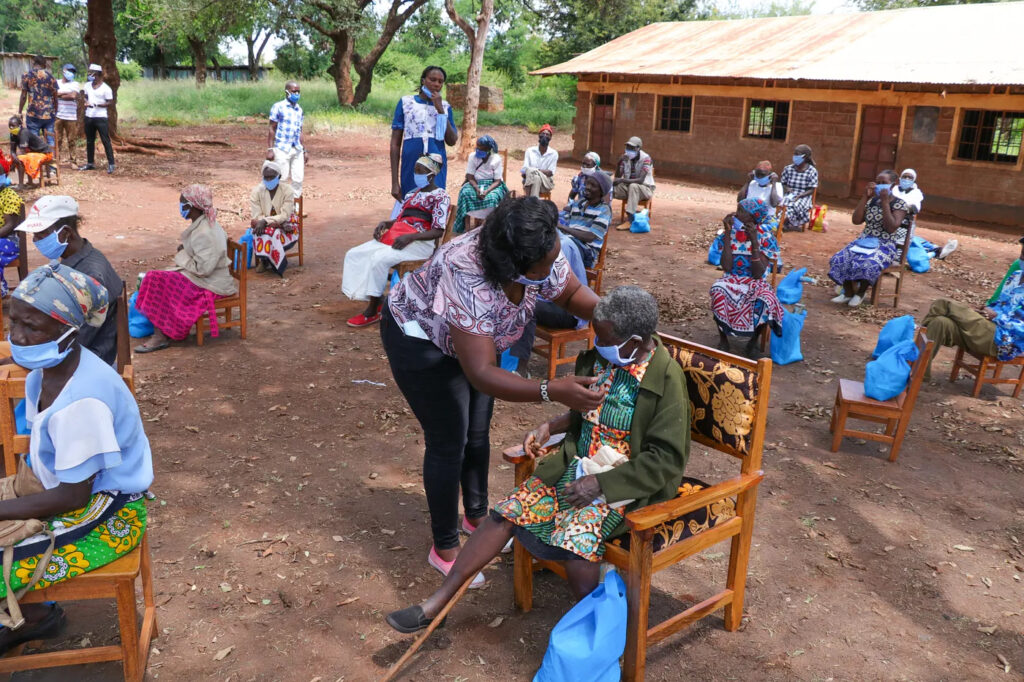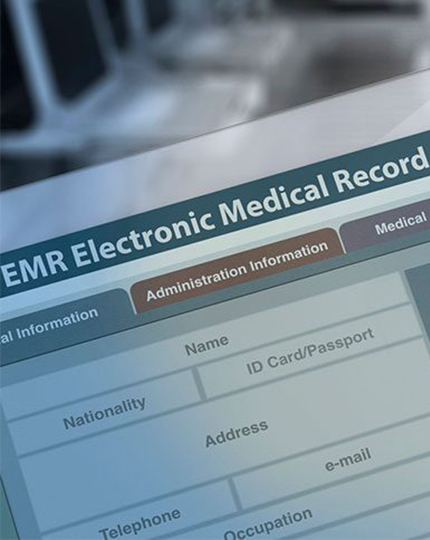Women’s health is a critical aspect of overall healthcare, and it becomes even more crucial in humanitarian settings where vulnerable populations face numerous challenges. In such contexts, ensuring access to quality healthcare services for women can be a daunting task. However, advancements in technology have opened up new avenues to overcome these barriers and empower women in humanitarian settings. This article explores the role of electronic health records (EHR) and telehealth initiatives in promoting and improving women’s health in these challenging environments.

Electronic health records (EHRs) streamline data management, enhancing coordination among healthcare providers, patient tracking, and continuity of care. EHRs enable healthcare organizations in humanitarian settings to optimize services and deliver improved healthcare experiences for women.
Telehealth — leveraging digital communication platforms — facilitates remote consultations, diagnoses, and treatments. This technology enables women to access expert medical advice, prenatal care, and mental health support without physical visits to healthcare facilities, which are often limited.
Key Challenges Faced by Women in Underserved Areas
In humanitarian settings, women face numerous challenges in accessing adequate healthcare services, which can significantly impact their well-being. Humanitarian settings often lack sufficient healthcare infrastructure, including clinics, hospitals, and trained medical personnel. Women residing in remote areas or displaced populations may struggle to access essential healthcare services, including reproductive healthcare, maternal care, and preventive screenings.
1. Lack of Trained Healthcare Providers:
The shortage of healthcare professionals and specialized providers in humanitarian settings can limit women’s access to skilled care. This scarcity hampers the availability of comprehensive services tailored to women’s specific healthcare needs, such as prenatal care, family planning, and gynecological services.
2. Insufficient Health Infrastructure:
Inadequate healthcare infrastructure, including medical equipment, medications, and laboratory facilities, poses significant challenges for delivering quality healthcare services. Limited resources and unreliable supply chains hinder the availability of essential medicines, diagnostic tools, and medical technologies required for women’s health interventions.
3. Cultural and Social Barriers:
Cultural norms and social stigmas can create barriers to women seeking healthcare. Traditional beliefs, gender inequalities, and discriminatory practices may prevent women from seeking reproductive healthcare services or discussing sensitive health issues openly.
How EMR and Telehealth Solutions Changed Healthcare for Women?
Electronic medical records (EMRs) have emerged as a powerful tool for improving women’s health in humanitarian settings. By digitizing health records and streamlining data management, EMR initiatives offer numerous benefits that can positively impact healthcare delivery. The following points highlight how EMRs empower women’s health in these contexts:
1. Improved Data Management and Patient Tracking:
EMRs enable healthcare providers to efficiently collect, store, and access patient information. This enhanced data management allows for accurate and comprehensive medical histories, ensuring that healthcare providers have a holistic understanding of a woman’s health profile. With better patient tracking, providers can monitor healthcare interventions, follow up on treatments, and identify patterns or trends to guide personalized care plans.

2. Enhancing Coordination Among Healthcare Providers:
EMRs facilitate seamless communication and collaboration among healthcare teams. In humanitarian settings where providers may be dispersed or mobile, EMRs enable real-time sharing of medical information, test results, and treatment plans. This coordinated approach ensures continuity of care and reduces the risk of miscommunication or duplication of services, benefiting women who require multidisciplinary care.
3. Teleconsultation and Remote Diagnosis:
Telehealth enables women to access healthcare consultations remotely, reducing the need for physical visits to healthcare facilities. Through video calls or messaging platforms, women can consult with healthcare providers, discuss symptoms, receive medical advice, and even obtain preliminary diagnoses. This saves time, travel costs, and provides women with the convenience of receiving healthcare services from the comfort of their homes or local communities.
4. Telemedicine for Maternal and Prenatal Care:
Telemedicine plays a crucial role in improving maternal and prenatal care in humanitarian settings. Pregnant women can benefit from remote monitoring of vital signs, remote ultrasound consultations, and regular check-ins with healthcare providers. Telemedicine ensures that women receive proper prenatal care, allowing for early detection of complications and timely interventions, even in resource-constrained settings.
Conclusion
Empowering women’s health in humanitarian settings requires innovative solutions that transcend traditional barriers. The integration of electronic medical records (EMR) and telehealth initiatives has emerged as a transformative approach to address the unique challenges faced by women in these contexts. By leveraging technology, these initiatives offer opportunities to improve healthcare access, enhance coordination among providers, and empower women to actively participate in their own well-being.
By embracing these technologies and implementing targeted initiatives, we can empower women in humanitarian settings to access quality healthcare services, irrespective of geographical constraints or resource limitations. The improved healthcare outcomes, increased patient engagement, and optimized resource utilization brought about by EMR and telehealth initiatives will contribute to a more equitable healthcare system for women in need.
Ophy Care is a digital healthcare infrastructure company that builds EMR and telehealth solutions for humanitarian organizations that are actively working to improve healthcare access for underserved populations.


